From the Louvre to the Natural History Museum, the world is packed with extraordinary museums. In honor of International Museum Day on May 18, we’re giving you expert tips on how to travel hack the world’s most famous (and busiest) museums. Discover the best times and days to go, the secret entrances, and the exhibits you can’t miss.
The Louvre Museum, Paris, France
With almost eight million visitors each year, the Louvre Museum in France is the world’s largest and most visited museum in the world. With an extensive collection of art from some of the greatest masters in history, including the renowned Mona Lisa and the Venus de Milo, the Louvre Museum is a rite of passage for any visitor to Paris.
GET INSPIRED BY: Paris Explorer
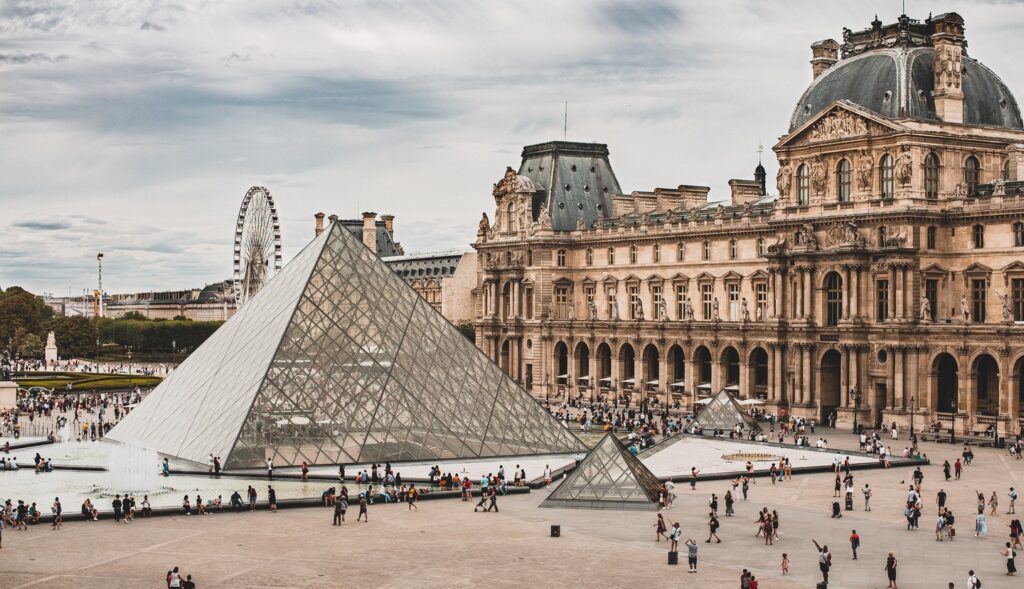

Best time and day to go
To make the most out of your visit to the Louvre, plan your trip during the early morning or late afternoon when there are fewer crowds. Arrive at least 30 minutes before the museum opens at 9am or take advantage of the extended hours on Wednesdays and Fridays, when the Louvre stays open until 9:45pm.
Visiting on weekdays, particularly Mondays and Thursdays, is ideal for avoiding large crowds. Keep in mind that the museum is closed on Tuesdays and certain holidays.
You should also consider visiting outside of peak tourist season (June through August). Or go for the off-season months or shoulder season (April-May or September-October). If you visit during the low season (October to March), be aware that the first Sunday of each month offers free admission, which attracts large numbers of tourists.
How to get tickets
Save time by purchasing your tickets online in advance. This allows you to access the museum through the Passage Richelieu, bypassing the long queues at the entrance.
Keep in mind that the Louvre offers free admission on the first Friday of the month after 6 pm (except in July and August), on July 14th, and on the first Sunday of each month. However, these days tend to be more crowded, and it’s still advisable to book a time slot in advance.
Best entrances
As one of the world’s most famous museums, the main entrance to the Louvre, through the Pyramid, can get very crowded and often has the largest queue. Instead, try using one of the lesser-known entrances, such as the Porte des Lions or the Carrousel du Louvre, in an underground shopping mall, which typically has shorter lines.
Be prepared for security checks
All visitors to the Louvre must pass through a security check. To speed up the process, make sure you’re not carrying any prohibited items, such as large bags, sharp objects, or tripods.
RELATED CONTENT: A pocket guide to Paris’ arrondissements & districts


What to see at the Louvre
The Louvre is the largest single-complex museum in the world at 800,000 square feet, making it impossible to see everything in one day. Before you visit, be sure to research the sections and artworks you’re most interested in and go from there. We’ve listed a few essentials you won’t want to miss:
- The Mona Lisa – Denon Wing
- Venus de Milo – Sully Wing
- Winged Victory of Samothrace – Denon Wing
- The Coronation of Napoleon by Jacques-Louis David – Denon Wing
- Liberty Leading the People by Eugène Delacroix – Denon Wing
- The Raft of the Medusa by Théodore Géricault – Denong Wing
- The Wedding Feast at Cana by Paolo Veronese – Denon Wing
- The Grande Galerie, including works by Leonardo da Vinci, Raphael, and Titian – Denon Wing
- Egyptian Antiquities collection, including the Seated Scribe and the Great Sphinx of Tanis – Sully Wing
- Near Eastern Antiquities, including the Code of Hammurabi – Richelieu Wing
Tips for seeing the Mona Lisa
Arguably the most famous painting in the world, the Mona Lisa by Leonardo da Vinci is a must-see at the Louvre. Located in Room 711 on the first floor of the Denon Wing, the Mona Lisa attracts large crowds, however, some visitors feel let down when they see the Mona Lisa for the first time. This is usually because it is a surprisingly small painting and is kept far away from visitors. Because of the security and the large crowds, it can be hard to get a good look at the painting.
To get around it, try to visit the Louvre at the least busiest times, or head to the Mona Lisa as soon as the museum opens at 9am. It’s totally worth seeing Mona Lisa’s enigmatic expression at least once!
RELATED CONTENT: 12 secret hidden gems you should explore next time you visit Paris
The Vatican Museums, Vatican City
Home to over 70,000 works of art including the Sistine Chapel and the Raphael Rooms, it’s no wonder the Vatican Museums are the second most visited museums in the world, with over five million visitors each year.
GET INSPIRED BY: Best of Italy
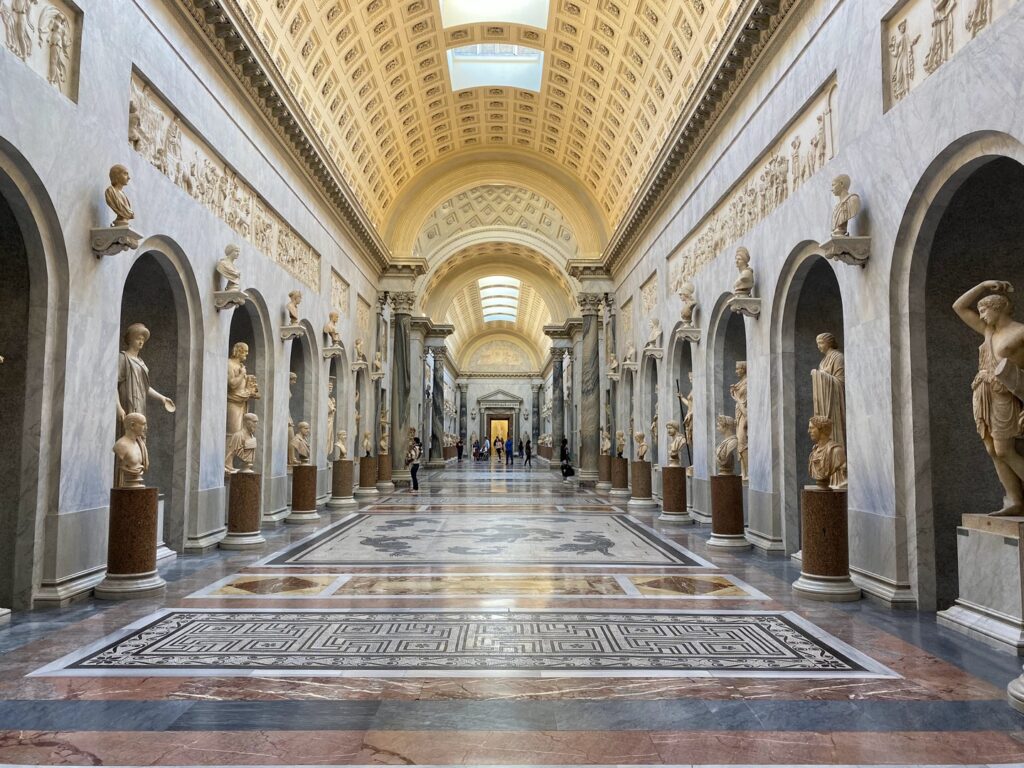

Best time and day to go
As one of the world’s most famous museums, the Vatican Museums can get incredibly crowded. It’s recommended to arrive early in the morning or late afternoon. Weekday mornings are also less busy, particularly on Tuesdays, Wednesdays, and Thursdays. Another option is to visit on Friday evenings between April and October when the museums offer extended hours, providing a more relaxed atmosphere.
The Vatican Museums are closed on Sundays, except for the last Sunday of each month when they offer free entry. This can be a great opportunity to visit the museums if you’re on a budget but be prepared for larger crowds and longer waiting times.
If you’re looking to avoid crowds altogether, it’s a good idea to plan your visit outside of peak tourist season, which typically runs from June through August.
How to get tickets
Purchase your tickets online before your visit to save time and avoid long queues at the entrance. You can also consider purchasing a skip-the-line ticket or a guided tour, which includes expedited entry.
RELATED CONTENT: Love culture? This European Trafalgar tour is the one for you


Dress appropriately
The Vatican Museums are part of the Vatican City, a sovereign state with a strict dress code for visitors. Ensure you wear clothing that covers your shoulders and knees, as you may be denied entry if your clothing is considered inappropriate.
What to see at the Vatican Museums
The Vatican Museums are massive so it’s best to create a plan or route to maximize your time and ensure you see the essential artworks and sections of the museums. Here’s what you should prioritize:
- Sistine Chapel: Breathtaking frescoes by Michelangelo, Botticelli and Perugino, including “The Creation of Adam” on the ceiling and “The Last Judgment” on the altar wall.
- Raphael Rooms: These four rooms contain a series of stunning frescoes painted by Raphael and his workshop, including “The School of Athens”.
- Gallery of Maps: This long corridor and ceiling is adorned with beautiful topographical maps of Italy, by Ignazio Danti.
- Pinacoteca: The Vatican Museums’ art gallery includes works by Caravaggio, Leonardo da Vinci, and Raphael.
- Egyptian Museum: This collection includes a range of Egyptian artifacts, including statues, sarcophagi, and mummies.
- Pio-Clementino Museum: Dedicated to classical antiquities, including the “Apollo Belvedere,” “Laocoön and His Sons,” and the “Belvedere Torso.”
- Borgia Apartments: Once the residence of Pope Alexander VI, these rooms now display a collection of Christian art and artifacts from around the world.
RELATED CONTENT: 6 incredible art masterpieces to see with Trafalgar
Natural History Museum, London, England
With over 80 million specimens covering everything from dinosaurs to insects, including a life-sized blue whale skeleton and a collection of dinosaur skeletons, the Natural History Museum in England is undoubtedly one of the world’s most famous museums. It’s also the third most visited museum on earth, with over 4.5 million visitors every year.
GET INSPIRED BY: London Explorer
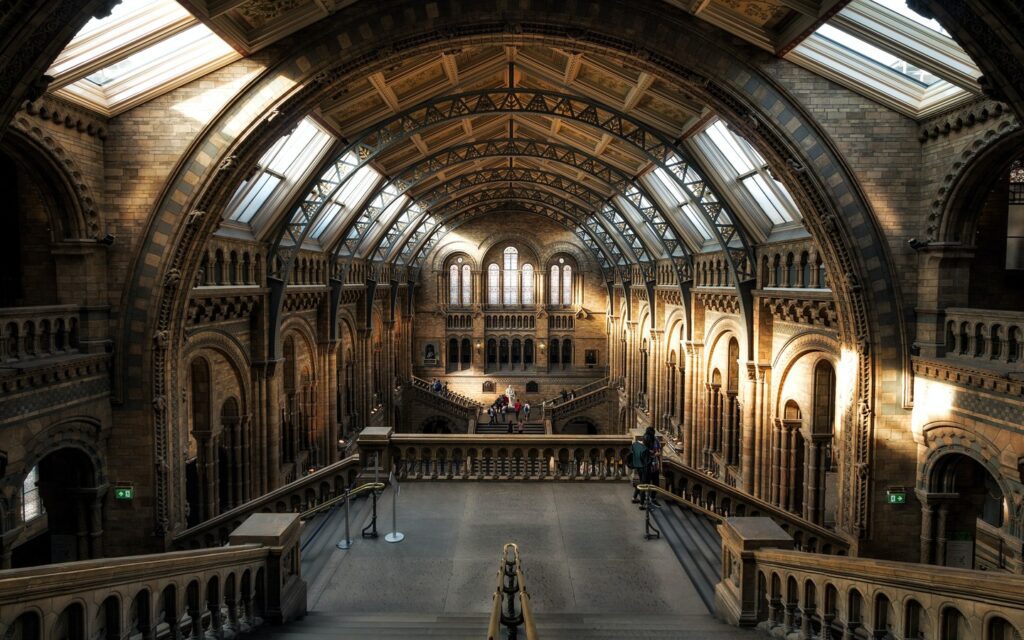

Best time and day to go
Once again, the key is to get there early in the morning or late in the afternoon after 3 to 4pm when the queues get smaller. The museum opens at 10am, so try to arrive 15 minutes before to beat the rush. You can also visit during the late opening hours on the last Friday of each month when the museum stays open until 10pm. These evenings offer a less crowded experience and also include special events and lectures.
If you really want to avoid the crowds, you can even book a real ‘Night at the Museum’. The museum offers sleepovers at the museum so you can enjoy the exhibits all to yourself!
How to get tickets
Admission to the Natural History Museum is free, but special exhibitions may have an entrance fee.
Check the waiting time
Wait times are around 15 to 30 minutes in the off-peak season, but the entrance line usually moves fast. It gets especially busy during weekends, school holidays and peak tourist season (June to August) when waiting times can exceed an hour.
The museum updates information about waiting times on its Twitter account during busy days and holidays, so be sure to check it before you go.
Choose your entrance
There are two entrances to the Natural History Museum. The Cromwell entrance is the main one and is preferred by those who want to start with the Dinosaurs, Creepy Crawlies, the Blue Whale, the Darwin Centre and the Wildlife Garden sections. It’s usually more crowded than the Exhibition Road entrance, so if you want to try to save time, go for this one. The Exhibition Road entrance is closer to Volcanoes and Earthquakes and the giant Earth model. It’s also step-free.
RELATED CONTENT: 13 of the best secret hidden spots to explore around London
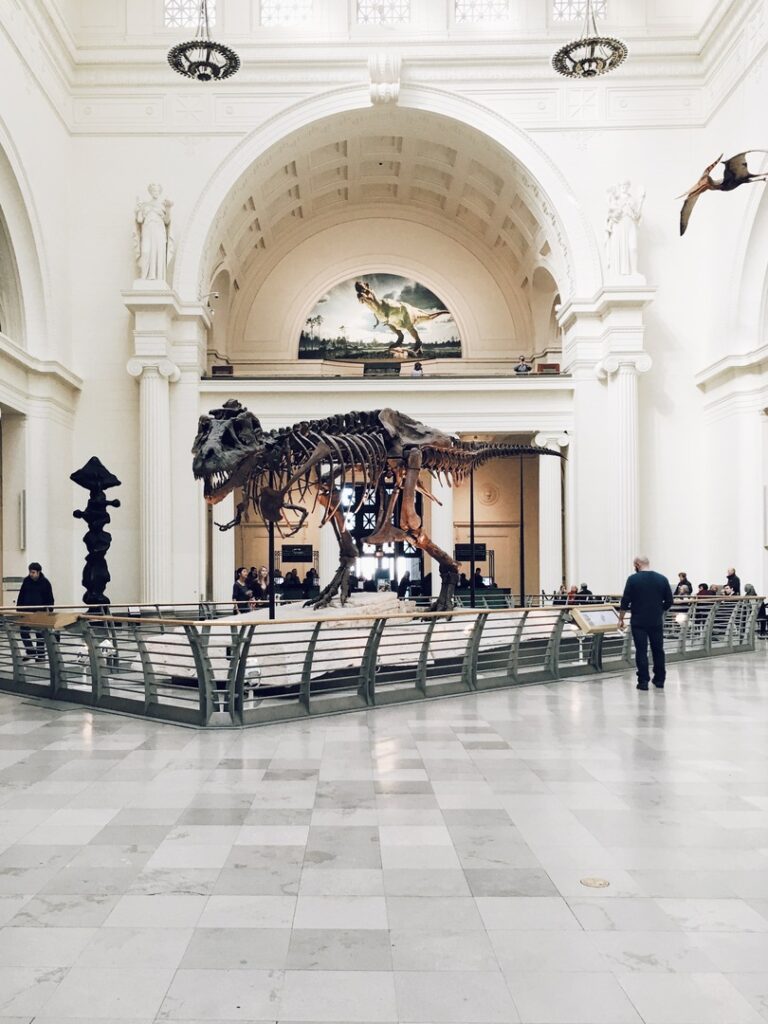

Tips for seeing the Dinosaurs exhibit
The Dinosaurs section of the museum is by far the most popular area of the museum. It gets so busy that visitors can be limited here, with a separate waiting line to see the Dinosaurs. Here are some hacks to avoid the lines:
- During peak periods, the museums allow you to book an entrance time for the Dinosaurs on their official website. While this guarantees wait-free access to the Dinosaurs, you’ll still have to go through the main entrance queue.
- If you pre-book a ticket for one of the temporary exhibitions, you’ll have priority access and won’t need to wait in the entrance queue. While this does means you have to pay to enter, it might be worth it to skip the lines.
- Arrive 15 to 30 minutes before 10am and go straight to the Dinosaurs before the crowds roll in.
What to see at the Natural History Museum
This isn’t one of the world’s most famous museums just for the Dinosaurs collection. There’s also the renowned Diplodocus skeleton in the Hintze Hall and the blue whale skeleton. Be sure to visit the Earth Hall, the Creepy Crawlies collection, and the Wildlife Photographer of the Year exhibition.
Combine your visit with other attractions
The Natural History Museum is located in South Kensington and is within walking distance of several other fantastic museums, such as the Victoria and Albert Museum and the Science Museum.
RELATED CONTENT: How to bag seats at London’s top theaters on a budget
The Metropolitan Museum of Art, New York City, USA
Famously nicknamed “The Met”, this museum hosts an extensive collection of art from different cultures and historical periods, ranging from ancient Egyptian artifacts to modern American and European masterpieces. With over three million visitors a year, you’ll want to pick up these tips and tricks to make the most of the MoMA, one of the world’s most famous museums.
GET INSPIRED BY: New York Explorer
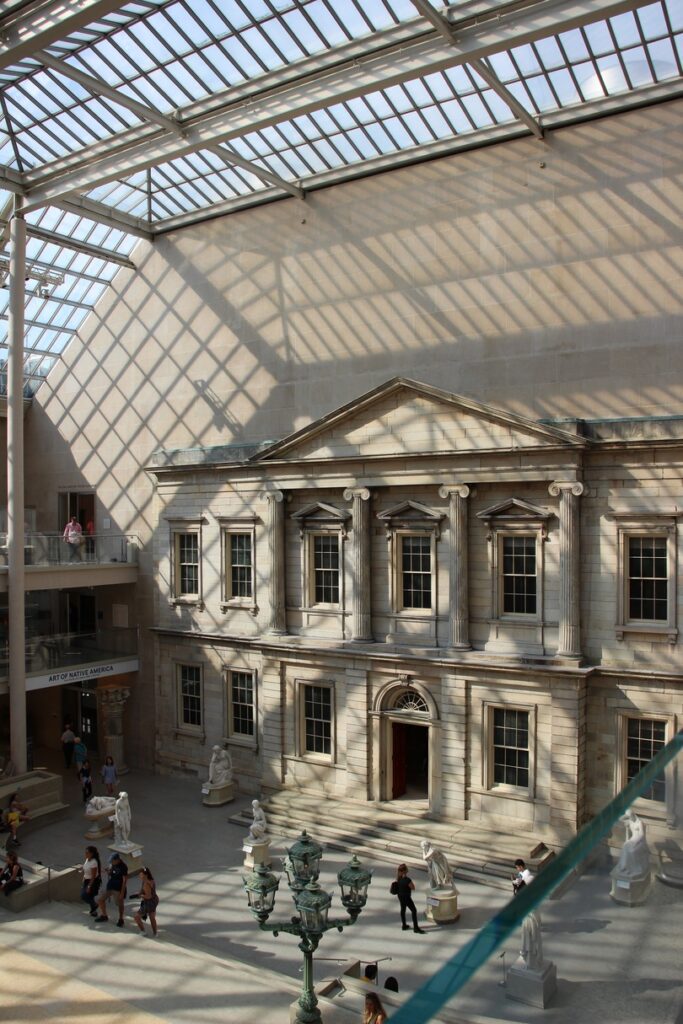

Best time and day to go
You should arrive early in the morning or late in the afternoon, and plan your visit for the less busy weekday mornings including Tuesdays, Wednesdays, and Thursdays. The museum also offers extended hours until 9pm on Friday and Saturday evenings.
Saturdays are the busiest day of the week, and during school holidays and public holidays, the number of visitors doubles. The museum is also closed on Mondays, except for certain holiday Mondays.
It’s a good idea to plan your visit during the off-season months outside June, July and August. February and September are usually the least crowded months.
How to get tickets
Purchase your tickets online before your visit to save time and avoid waiting in line at the ticket counter.
Prepare for security checks
You’ve got to expect long lines at one of the world’s most famous museums, but you can cut this time in half by leaving backpacks and packages at home, as these must be checked in at the coat-check facilities.
RELATED CONTENT: Where to go for the best high art travel experiences


What to see at the Met
These are some of the most iconic sections of the Met you won’t want to miss.
- European Paintings: An impressive collection of European masterpieces from the 12th to the 19th centuries, including works by renowned artists such as Rembrandt, Vermeer, Van Gogh, and Monet.
- American Wing: Paintings, sculptures, and decorative arts from the colonial period to the early 20th century in the US, including Emanuel Leutze’s “Washington Crossing the Delaware” and John Singer Sargent’s “Madame X.”
- Egyptian Art: One of the world’s most comprehensive collections of Egyptian art and artifacts, including the Temple of Dendur.
- European Sculpture and Decorative Arts: Don’t miss Antonio Canova’s sculpture, Venus Italica, Houdon’s sculpture of his daughter Sabine, and Gian Lorenzo Bernini’s sculpture Bacchanal.
- Greek and Roman Art: A vast collection of ancient Greek, Roman, and Etruscan art, including the Roman Sarcophagus with Scenes from the Lives of Saint Peter and Christ and the Euphronios Krater.
A hot tip is to explore some of the lesser-known sections of the Met that often don’t see large crowds even during busy hours. These include the Arts of Africa, Oceania, and the Americas, the Gallery of Asian Art and Ancient Near Eastern Art, and the Photography section.
Visit the rooftop
Don’t miss the Met’s rooftop garden! With stunning views of Central Park and the Manhattan skyline, it also features a seasonal exhibition and a bar where you can enjoy a drink while taking in the view. Note that the rooftop is only open from April to October, weather permitting.
Combine your visit with other attractions
The Met is located along Museum Mile on Fifth Avenue and is near several other notable museums and attractions, such as the Guggenheim Museum, the Cooper Hewitt Smithsonian Design Museum, and Central Park.
RELATED CONTENT: Tips to beat the crowds the next time you travel
Do you have any tips or tricks for visiting the world’s most famous museums? Let us know in the comments below!